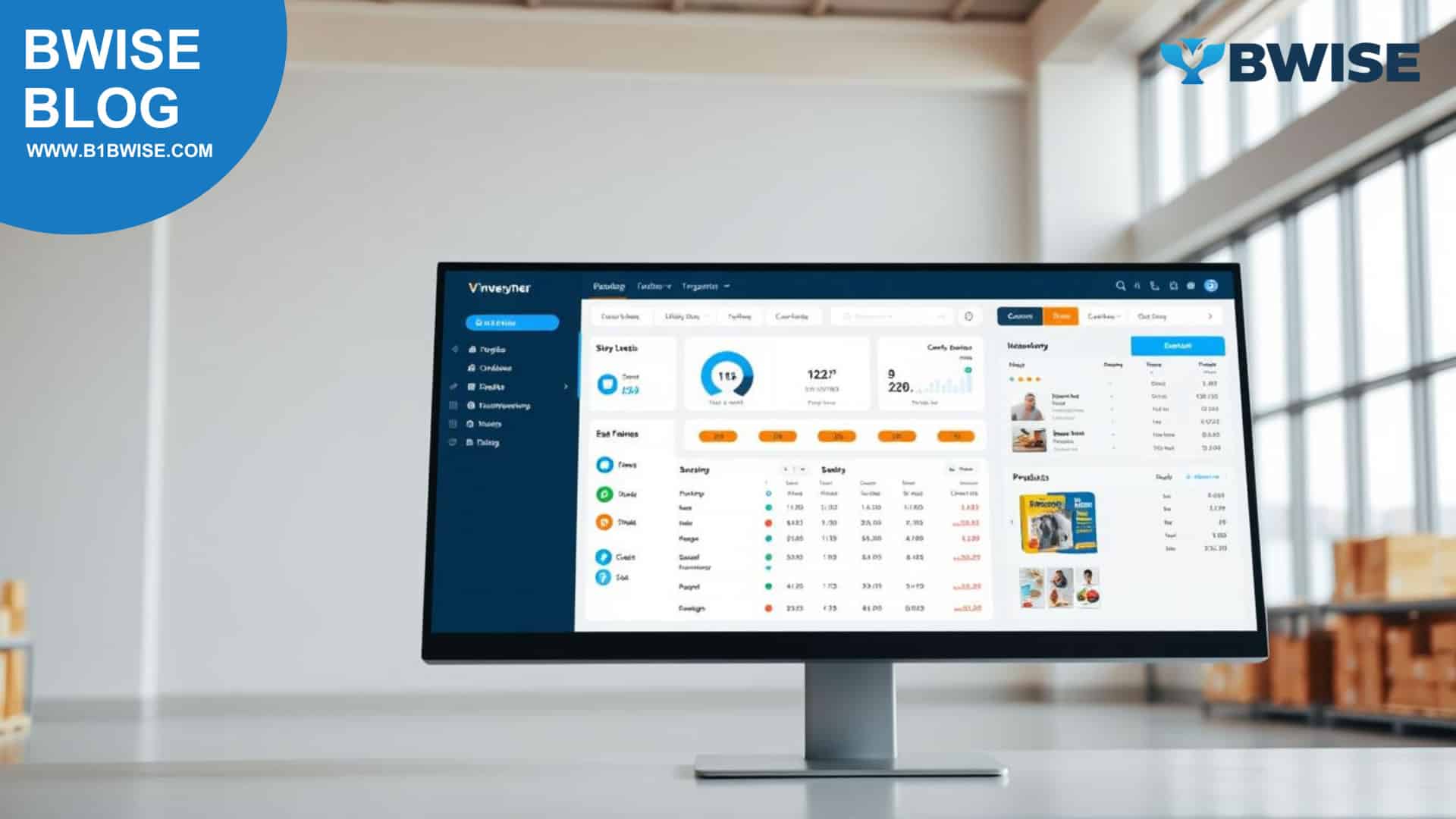Managing inventory is vital for businesses, and selecting the appropriate system is essential. The advancement of technology has led to the popularity of warehouse management systems, which provide a more efficient and precise method for tracking and managing inventory.
A warehouse management system (WMS) is a software solution that helps businesses manage their warehouse operations, from receiving and storing inventory to shipping and tracking orders. In contrast, traditional inventory systems often rely on manual processes and may not provide real-time visibility into inventory levels.

In the current fast-paced business landscape, an effective inventory management system is essential for success. This article examines the distinctions between warehouse management systems (WMS) and traditional inventory systems, assisting businesses in determining the most suitable option for their needs.
Key Takeaways
- Understand the differences between warehouse WMS and traditional inventory systems
- Learn how a WMS can improve inventory management
- Discover the benefits of implementing a WMS in your warehouse operations
- Find out how to choose the right inventory management system for your business
- Explore the impact of WMS on warehouse efficiency and productivity
Understanding Inventory Management Fundamentals
Inventory management requires balancing stock levels, demand forecasting, and supply chain efficiency. Effective management helps businesses optimize operations, reduce costs, and enhance customer satisfaction.
Key Components of Inventory Management
Inventory management comprises several key components, including inventory tracking, demand forecasting, and supply chain optimization. By leveraging inventory management software, businesses can streamline their operations and make data-driven decisions.
Moreover, integrating supply chain solutions into inventory management enables companies to respond quickly to changes in demand, reduce lead times, and improve overall efficiency.
By understanding the fundamentals of inventory management, businesses can identify areas for improvement and implement strategies to optimize their operations.
Traditional Inventory Systems Explained
The traditional approach to inventory management is characterized by paper-based systems and simple spreadsheet solutions that are prone to errors.
Traditional inventory systems often rely on manual processes, which can be time-consuming and labor-intensive. Paper-based systems, for instance, require warehouse staff to manually record inventory movements, which can lead to high error rates and data accuracy issues. Moreover, these systems are often scalability constraints, making it difficult for businesses to adapt to changing demands.
Paper-Based Systems
Some warehouses continue to use paper-based systems for inventory management, despite their drawbacks. These systems require manual recording of inventory movements, which can result in errors, such as incorrect quantity recordings, causing discrepancies in inventory.
Basic spreadsheet solutions are a traditional inventory system that, despite being an improvement over paper-based methods, have limitations in managing complex inventory operations. They often struggle with tasks like real-time tracking of inventory movements in warehouse automation.
Traditional inventory systems are often less advanced than modern logistics software, which can connect with other business systems and offer real-time insights into inventory operations.
Traditional inventory systems, such as paper-based methods and basic spreadsheets, have major drawbacks. They are error-prone, lack scalability, and cannot meet the requirements of contemporary warehouse operations.

Warehouse WMS: The Modern Approach to Inventory Management
Warehouse Management Systems (WMS) significantly change inventory management by offering advantages over traditional methods. WMS is a software solution that assists in managing and controlling daily warehouse operations, including receiving, storing inventory, shipping, and reporting.
Real-Time Inventory Tracking
A key feature of a Warehouse Management System (WMS) is real-time inventory tracking, which offers businesses an accurate view of their inventory levels. This capability helps them make informed decisions regarding stock, shipping, and receiving, ultimately reducing issues like stockouts and overstocking.
WMS offers a key benefit through automated data collection using technologies like barcode scanning and RFID. This automation captures inventory movement data, decreasing manual entry and error potential. As a result, businesses can streamline operations, enhance accuracy, and lower labor costs.
Integration Capabilities
A WMS can also integrate with other business systems, such as enterprise resource planning (ERP) and transportation management systems (TMS). This integration enables businesses to create a seamless and connected supply chain, improving overall efficiency and reducing costs.
Cloud-Based vs. On-Premise Options
Businesses can choose between cloud-based and on-premise Warehouse Management Systems (WMS). Cloud-based solutions are scalable, flexible, and have lower upfront costs, while on-premise solutions offer better control over data and security. The decision depends on the business’s specific needs.
Mobile and IoT Integration
The integration of mobile devices and IoT technology is crucial in warehouse management systems. This combination allows businesses to improve inventory tracking and management through real-time monitoring and updates.
In conclusion, a Warehouse Management System (WMS) is an effective tool for businesses aiming to enhance inventory management. It offers real-time inventory tracking, automated data collection, and integration features, which can lead to more efficient warehouse operations and improved supply chain effectiveness.
Comparing WMS vs Traditional Systems: Key Differences
Inventory management has evolved with the emergence of Warehouse Management Systems (WMS), which offer a more efficient and effective alternative to traditional systems that have been used for decades. The differences between these two approaches are complex and multifaceted.
WMS stands out in real-time inventory tracking, offering instant visibility into inventory levels and movements, unlike traditional systems that depend on manual updates and periodic audits. This capability allows businesses to make better decisions, minimize stockouts, and enhance supply chain efficiency.

Labor Productivity Metrics
Labor productivity is an important measure of how well inventory management systems perform. Warehouse Management Systems (WMS) provide advanced tools for tracking labor and analyzing productivity, helping businesses identify inefficiencies and improve workflows. Traditional systems typically do not offer these capabilities, making it harder to effectively use labor resources.
Order Fulfillment Accuracy
Order fulfillment accuracy distinguishes WMS from traditional systems. WMS enhances accuracy through automation and real-time tracking, leading to increased customer satisfaction and decreased costs related to errors in orders.
In conclusion, the differences between WMS and traditional inventory systems are significant, with WMS offering a more modern, efficient, and effective approach to inventory management. By leveraging real-time inventory tracking and advanced analytics, businesses can optimize their operations, improve labor productivity, and enhance order fulfillment accuracy.
Conclusion: Making the Right Choice for Your Warehouse Operations
Selecting the appropriate inventory management system is important for effective warehouse operations. Traditional inventory systems and Warehouse Management Systems (WMS) have different methods for inventory management. By grasping the basics of inventory management and the features of each system, you can make a well-informed choice that meets your business requirements.
A Warehouse WMS provides a modern way to manage inventory with real-time data, automation, and improved visibility, whereas traditional systems depend on manual processes, which can cause inaccuracies and inefficiencies. Choosing a Warehouse WMS offers advantages such as enhanced accuracy, higher productivity, and improved decision-making.
To choose effectively, evaluate your warehouse operations, business goals, and different inventory management software options. Adopting a Warehouse Management System can enhance inventory management, lower costs, and boost efficiency, ultimately supporting business growth and competitiveness in a rapidly changing market.
